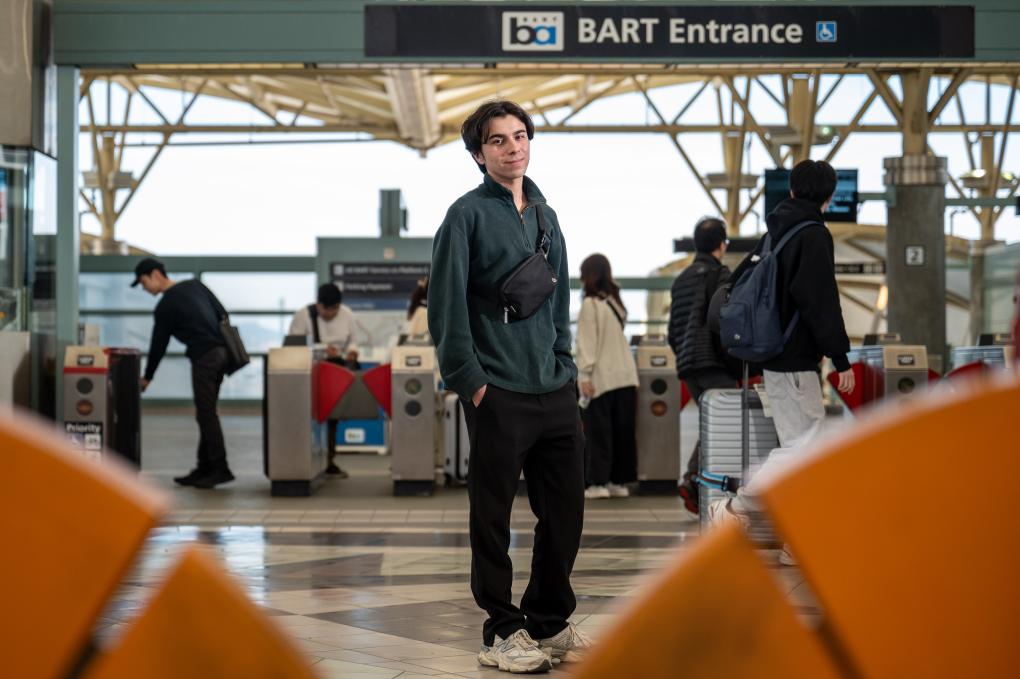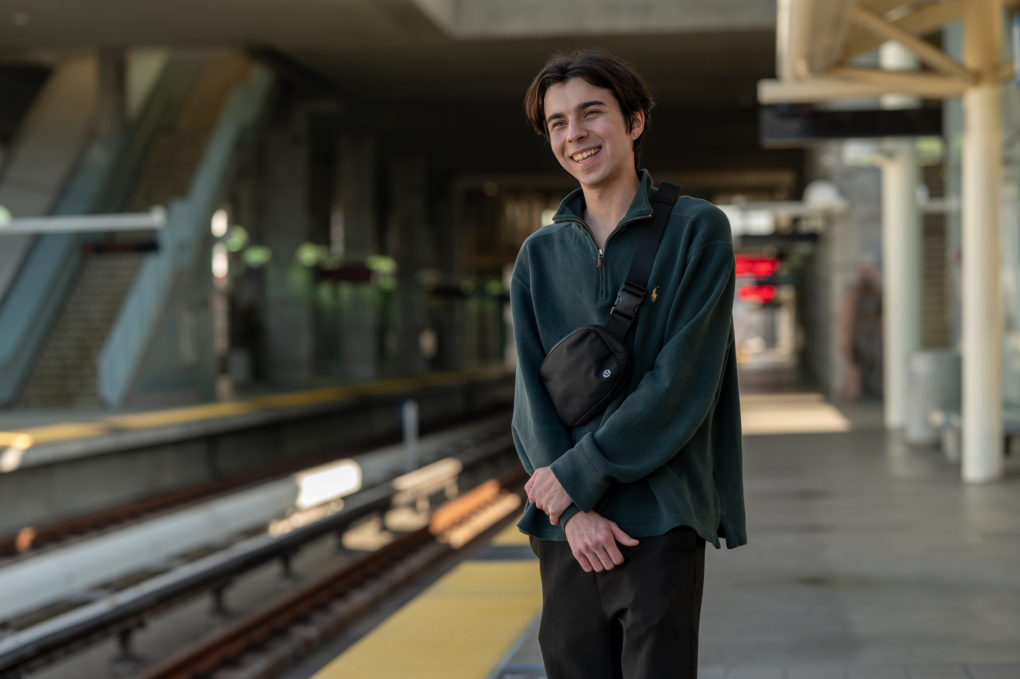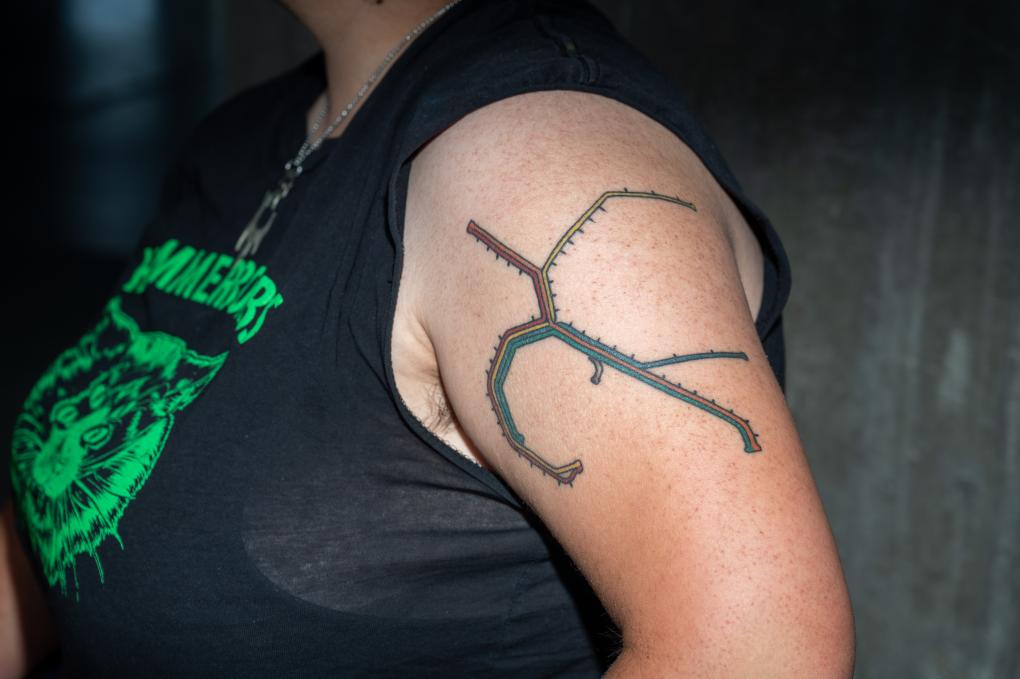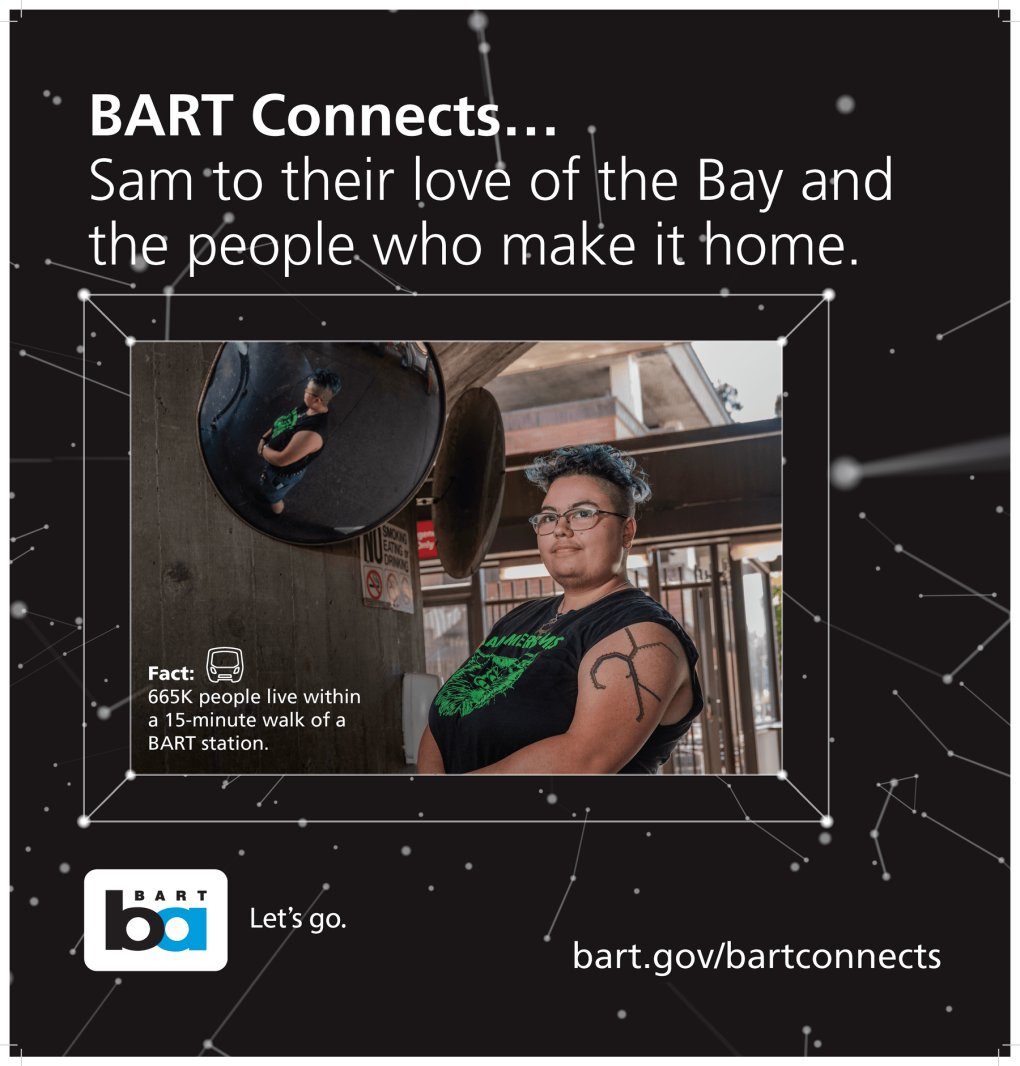Search Results
BART labor news updates
While we're doing everything possible to avoid any further work stoppages, we want our customers to have the most up to date information about BART labor negotiations and their impact on BART service. For the latest information, sign up for email and text alerts today.
Join BART Police Aug. 1 for National Night Out to help keep BART safe
BART PD personnel and crime-fighting mascot McGruff at 2016's National Night Out By JIAHAO HUANGBART Communications Intern BART Police are inviting the public to stop by one of our station tables for “National Night Out,” a program that has been going nationwide since the 1980s to emphasize the importance of
BART hushes screechy rails
BART is installing custom made rail dampers to help cut the noise level at what has been one of our loudest stretches of track- between Balboa Park and Daly City. These dampers, made of steel and rubber, physically clamp onto the rail every 30 inches and help lessen the vibration that causes the well-known
Statement of BART Board President Tom Radulovich on behalf of the BART Board of Directors
The Board of Directors met in closed session tonight and has voted 7 to 1 to release the following statement: “We’ve reviewed the chronology of events concerning section 4.8 and are convinced that it was never the District’s intention to include the disputed Family Medical Leave Act proposal in the contract
BART releases Annual Report
BART has released its Annual Report for 2018. You can find it here.
Early BART Car Design
Our original train cars were designed to feel sleek and futuristic to distance themselves from other outdated trains.
Take BART to Chinatown StreetFest
Come celebrate the Year of the Dog in Oakland on August 26 and 27 at the 19th Annual Oakland Chinatown StreetFest. The Chinatown StreetFest attracts thousands of people from all over the Bay Area to come savor the taste of Asia and experience the traditions that Oakland's Chinatown has so diligently preserved
BART Connects: A college student’s career ambitions – and romance – blossomed thanks to BART
Do you have a favorite BART memory or story to share? Email a short summary to BART Storyteller Michelle Robertson at [email protected], and she may follow up to schedule an interview.
In just a year of riding BART, Kevin DeAntoni made a decision. When he graduates from San Francisco State in a few years, he’s going to be an urban planner specializing in transportation.
Though he grew up in the Bay Area, DeAntoni had never really used BART until 2023. He lives in Redwood City, which doesn't have a BART station, and his default mode of transportation had always been a car.
Then, DeAntoni met someone. The issue? His potential flame lived fifty miles away on the other side of the bay.
“My boyfriend lives in Walnut Creek, and so initially in my mind, I was like, this won’t pan out for me, driving there will be so expensive,” DeAntoni said. Not to mention, he knew he'd sit in traffic for up to two-and-a-half hours one way if he left at the wrong time. Five hours in a car for one visit? Yikes, he thought.
Then, he remembered Walnut Creek has a BART station, and that BART station happened to be just a short walk from his budding romantic partner's house. DeAntoni realized he could park at Millbrae Station then ride to Walnut Creek for under $8 one way -- a fare he could afford on his student budget. And so, he said to himself, "Why not? Let's try it."
DeAntoni admitted he was a bit nervous at first – he hadn’t taken BART since 2019 to get to the San Francisco Pride Parade – and he didn’t know what to expect onboard.
“After a few weeks, I got the hang of it, and it felt like I’d been taking BART my entire life,” he said. He soon began taking the train for other trips – to Civic Center to see his friends, to Powell Street for ice skating.
“BART’s been a gateway for me to get out and explore the place I call home,” he said. “To be honest, I only really knew Walnut Creek from the Shane Co. commercials. I didn’t even know most of Contra Costa existed until I took BART there.”

Kevin DeAntoni pictured at Millbrae Station.
DeAntoni remembers disembarking at Walnut Creek Station for the first time and catching sight of Mount Diablo in the distance. He realized then he'd only seen the mountain in photos.
“I feel infinitely more independent now thanks to BART,” he said. “I’m only 21, but I feel like I’ve lived [in the Bay Area] for 70 years. I know where everything is!”
BART has also changed the course of DeAntoni's professional trajectory. He said recognizing his aspirations to work in transit “hit me out of nowhere," as did a newfound “obsession” with trains. He hopes to one day “play a big role in how metropolitan areas revolve around public transportation and vice versa.”
“My goal is to expand BART as much as legally and logistically possible so we can maximize the number of people who benefit from it,” he said, outlining his ambition proposal for the system. “I want to repay BART for how much it's done for me.”
DeAntoni said the system speaks to him so deeply, he can't express it in words. Every time he rides BART, he said, he experiences a gush of gratitude.
“How lucky are we to have BART,” he said.

About BART Connects
The BART Connects storytelling series was launched in 2023 to showcase the real people who ride and rely on BART and illustrate the manifold ways the system affects their lives. The subjects of BART Connects will be featured in videos as well as a forthcoming marketing campaign that is slated to run across the Bay Area. Find all the stories at bart.gov/bartconnects.
The series grew out of BART's Role in the Region Study, which demonstrates BART’s importance to the Bay Area’s mobility, cultural diversity, environmental and economic sustainability. We conducted a call for stories to hear from our riders and understand what BART means to them. More than 300 riders responded, and a selection of respondents were interviewed for the BART Connects series.
BART Connects: This rider uses their BART System Map tattoo to give directions

Sam Johnson sports a tattoo of the BART system map on their bicep.
When Sam Johnson sees someone lost in a BART station, they roll up their sleeve and show them a bicep.
Etched five layers deep into the epidermis of Sam’s left arm is a tattoo of the BART System Map. It’s Sam’s first and only tattoo, and in a pinch, it comes in handy.
“I’ve helped a bunch of people figure out where to go,” Sam said. “I point to my arm and say, ‘We’re here in Concord, you’re going to transfer to this station, then ride along here, and get off at this station.’”
It’s a practical tattoo but also a piece of art, an homage to the Bay, a love letter to transit. And let’s be honest, said Sam, “It looks good on me.”
Sam grew up in El Cerrito and now lives in Concord, where they’re studying technical theater at Diablo Valley College. Sam still remembers being six years old and waiting for their Youth Clipper card to arrive in the mail. They still have the card – a memento of BART rides past and how much they’ve grown.
Sam took BART all the time as a kid with their mom and brother and then on their own when they didn’t have a driver’s license and just wanted to get out.
“Sometimes things in my house were not super fun and awesome,” they said. “Being able to get on BART and go somewhere was comforting.”
Sam felt safe in a BART station, where they knew a train would never fail to arrive.
“Every time I saw the train pulling into El Cerrito, felt the wind blowing, the sound of it on the tracks, I felt at home,” they said.
BART is “the veins of the region" and a gateway to community for Sam. When they were growing up, they were pretty shy and introverted. BART and the requisite interactions with strangers on trains "gave me the ability to be myself.”

Sam Johnson shows off their tattoo.
“Without BART, I would be less outgoing, less enthusiastic, less able to adapt to new situations,” they said.
Sam especially appreciates that on the train, they get a brief glimpse into others’ daily lives as well as access to a “shared sense of humanity."
“We may be in different worlds, but we’re all here together,” Sam said of their fellow passengers. “When I’m with people on the train, I always think to myself, ‘I hope you get home safe; I hope you have a good day; I hope you get an extra long break at work.’”
So, why the BART tattoo?
For Sam, it’s a way to “spread the gospel of transit.” They’d been thinking about the tattoo for awhile, and one day, they finally got the courage to walk into Black Sea Tattoo in Walnut Creek with a printout of the System Map. Tattoo artist Earl Pitt took care of the rest.
In about two-and-a-half hours, after checking multiple times there were the right number of stops on the BART lines, Sam walked out of the shop with an aching, but beautiful, tattoo.
Thus far, when people see the tattoo, Sam hasn’t had to do much transit evangelizing.
“Everyone loves it and thinks it’s so fun,” they said. “People go, ‘Is that BART?’ They are so tickled.”
And Sam is already thinking about the next one: “I’m thinking it will be a tattoo of a legacy train.”

See Sam on our trains. They're featured in our new BART Connects marketing campaign.
About BART Connects
The BART Connects storytelling series was launched in 2023 to showcase the real people who ride and rely on BART and illustrate the manifold ways the system affects their lives. The subjects of BART Connects will be featured in videos as well as a forthcoming marketing campaign that is slated to run across the Bay Area. Find all the stories at bart.gov/bartconnects.
The series grew out of BART's Role in the Region Study, which demonstrates BART’s importance to the Bay Area’s mobility, cultural diversity, environmental and economic sustainability. We conducted a call for stories to hear from our riders and understand what BART means to them. More than 300 riders responded, and a selection of respondents were interviewed for the BART Connects series.